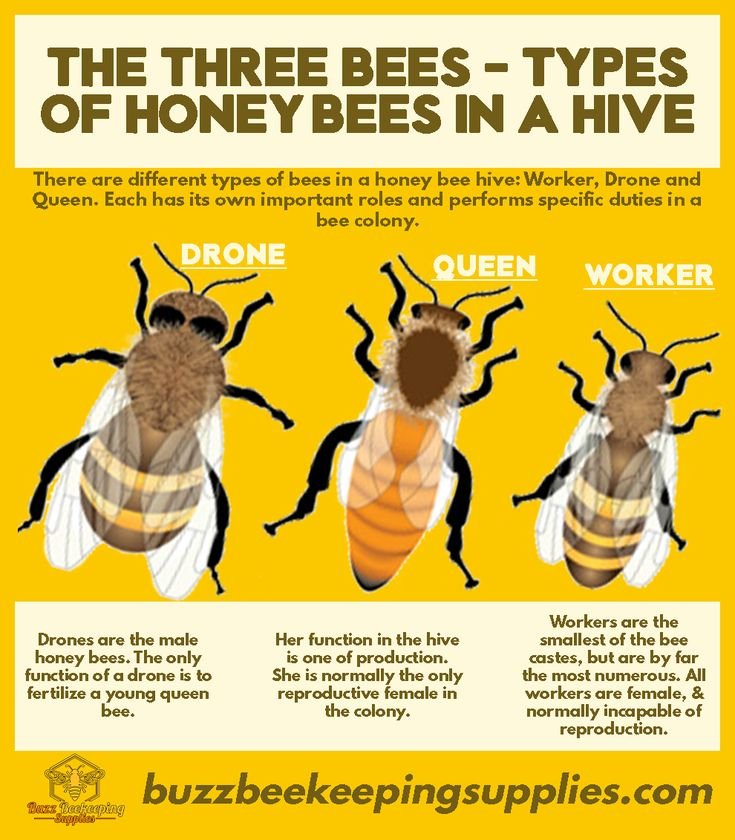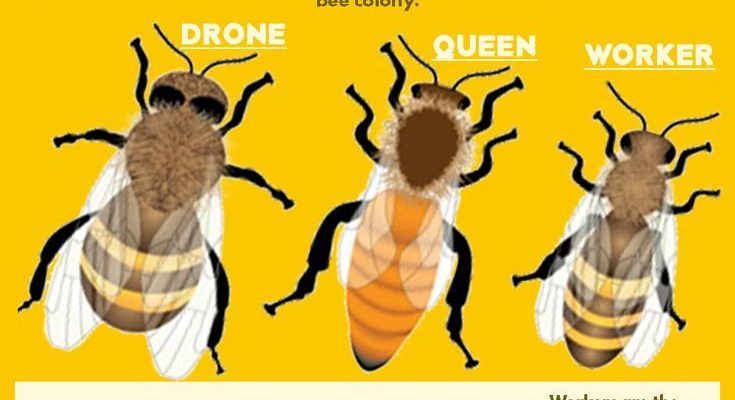
Here’s the thing: while honey bees are super popular and widely recognized, there are many other types of bees, each with their quirks and roles. Imagine walking into a library filled with various genres of books. Some are dedicated to romance, others to science, and some to thrillers. In the bee world, honey bees, bumblebees, solitary bees, and even mason bees all play their parts in the ecosystem. Understanding these differences helps us appreciate the beauty and complexity of nature, and it can even be essential for gardening and food production.
Let me explain how these buzzing creatures differ from each other, focusing first on the well-known honey bee before branching out to explore the various other bee types.
What Makes Honey Bees Special?
Honey bees belong to the genus Apis and are perhaps the most famous of all bee species. One of their standout features is their ability to produce honey. They do this by collecting nectar from flowers, which they then convert into honey through a fascinating process involving enzymes and evaporation. Honey bees live in large colonies, often containing tens of thousands of individuals, all working together in a highly organized society.
In a honey bee colony, you’ll find a queen, worker bees, and drones. The queen is the heart of the colony, responsible for laying eggs. Worker bees take on various roles, such as foraging for food, caring for the young, and defending the hive. Drones, on the other hand, are there for a singular purpose: to mate with the queen. The colony’s social structure and division of labor are key to their survival and productivity, making them unique among bees.
You might be wondering why honey bees are often given so much attention. Well, they play a crucial role in pollination. As they hop from flower to flower in search of nectar, they inadvertently transfer pollen, helping plants reproduce. This process is vital for many crops we rely on, like fruits, vegetables, and nuts. Without honey bees buzzing around, our food supply could be at risk.
Bumblebees: The Big Softies of the Bee World
Next up, we have bumblebees. They’re like the gentle giants of the bee family—fluffy, friendly, and a tad larger than honey bees. Bumblebees belong to the genus Bombus and are known for their fuzzy bodies, which help them collect pollen. Unlike honey bees, bumblebees often live in smaller colonies, typically containing just a few hundred members.
Bumblebees are also unique in their foraging habits. They’re excellent pollinators, especially for plants that require buzz pollination. This technique involves vibrating their bodies to release pollen from certain flowers. Think of it as giving flowers a little shake to access the goods inside! Their ability to work in cooler temperatures also allows them to forage earlier in the season when many other bees are still snoozing.
Their nesting habits differ from honey bees as well. Bumblebees often build nests underground, in abandoned rodent burrows or even in thick grasses. They don’t store honey like honey bees do; instead, they stockpile nectar and pollen to feed their young throughout the season. This difference in lifestyle makes bumblebees essential for many wild plants and crops, too.
Solitary Bees: The Independent Workers
Solitary bees are another fascinating group, and they live up to their name. Unlike honey bees and bumblebees, these bees don’t form colonies. Instead, each female usually builds her own nest, lays her eggs, and gathers food for her offspring—all by herself!
Some common types of solitary bees include leafcutter bees and mason bees. Leafcutter bees are known for their unique habit of cutting leaves to line their nests. You might find them buzzing around your garden, taking a snip from your roses! Mason bees, on the other hand, love to nest in small holes or crevices. They use mud or other materials to seal their nests, creating cozy homes for their larvae.
One of the cool things about solitary bees is their incredible diversity. They can vary greatly in size, shape, and color, with some even resembling wasps. Despite being independent, they are also critical pollinators. In fact, solitary bees are often more efficient at pollination than honey bees because they have specialized traits suited for specific plants.
Mason Bees: Nature’s Little Architects
When you think of bees building nests, mason bees might come to mind. These little builders belong to the genus Osmia and are known for their remarkable nesting habits. They usually seek out holes in wood, stems, or even man-made materials to create their homes. Unlike honey bees, mason bees don’t live in colonies; each female tends to her nest alone.
Mason bees are incredibly effective pollinators. They are often active early in the spring when many plants bloom. Their fuzzy bodies are perfect for collecting pollen, and they are particularly fond of fruit trees, making them essential for successful apple and cherry crops. What’s even more impressive is that a single mason bee can pollinate as many flowers in a day as dozens of honey bees.
You might be surprised to learn how easy it is to attract mason bees to your garden. Simply providing a few nesting blocks with holes of different sizes can invite these beneficial bees to make your backyard their home. By doing this, you’re not just creating a cozy place for them; you’re also boosting your garden’s productivity.
Carpenter Bees: The Woodworkers
Another fascinating type of bee is the carpenter bee, often mistaken for bumblebees due to their similar size and shape. Carpenter bees belong to the genus Xylocopa, and their name hints at their behavior—they like to drill into wood to create their nests. They prefer untreated wood, so if you have a wooden deck or fence, you might see them around.
While they might seem destructive, carpenter bees are excellent pollinators. They are attracted to flowering plants and can effectively pollinate crops like tomatoes and peppers. Their nesting habits, however, can cause frustration for homeowners. If they start making holes in your deck, you might be tempted to chase them away. But before you do, just remember that they also play a crucial role in supporting plant life.
Carpenter bees are generally solitary, similar to mason bees, but males can be quite territorial. They might buzz around and display aggressively, but they’re not likely to sting unless provoked. So, while they might cause a little concern, it’s important to recognize their value in the garden.
Why Understanding Bee Types Matters
You might be wondering why it’s important to know the differences between honey bees and other bee types. Well, for starters, understanding these distinctions can help us appreciate how diverse and vital bees are to our environment. Each type of bee contributes uniquely to pollination, which is essential for many plants and crops we rely on.
Moreover, knowing which bees are buzzing around your garden can guide your gardening practices. For instance, if you want to attract more mason bees, you can create a bee hotel. If you’re growing a certain type of flower, understanding what bees prefer can lead to a more fruitful garden.
Also, many bee populations are declining due to habitat loss, pesticides, and climate change. By educating ourselves about different bee species and supporting their habitats, we can play a part in conserving these essential pollinators.
Final Thoughts: Celebrate the Bee Diversity
In a nutshell, while honey bees might steal the spotlight, the world of bees is rich and varied. From the hardworking bumblebees to the solitary mason bees, each type has its own role in our ecosystem. It’s like a grand orchestra, where every bee contributes to the melodious hum of nature. So, the next time you see a bee buzzing by, take a moment to appreciate its unique attributes and what it brings to our world.
Understanding the differences between honey bees and other bee types not only enriches our knowledge but also encourages us to protect these remarkable creatures. And who knows? You might just find yourself inspired to plant a bee garden or create a cozy home for these pollinators. When we respect and support our buzzing friends, we’re helping not just them but ourselves, too.

